Training a dog can be a joyful experience—or a frustrating challenge—depending on the breed you choose. Some dogs are eager learners, while others have a stubborn streak that makes obedience harder.
For first-time pet parents or anyone hoping for an easy training experience, understanding which breeds may require extra patience is crucial. Many of these dogs were originally bred for specialized tasks, making them less responsive to standard commands.
Traits like high energy, intelligence, and strong prey drives can make training more demanding for many pet parents. Therefore, most dogs with these characteristics need to be properly trained with firm boundaries.
In this article, we’ll explore seven dog breeds that are known for being difficult to train. Knowing their unique traits will help you set realistic expectations and prepare for the commitment needed to raise a well-behaved companion.
Dog Breeds to Avoid If You’re Looking for Easy Training
1. Beagle
Why They’re Challenging to Train
Beagles are cheerful, clever, and social dogs, making them lovable companions, but these same traits make training tricky. Their strong scent-driven instincts can easily distract them, leading to wandering or ignoring commands.
Bred to hunt in packs, they thrive on company and activity, so leaving them alone often results in destructive behavior. Their curious, energetic nature requires constant supervision and engagement, as per the AKC.
Beagles are also escape artists. Without a tall, secure fence and careful leash management, they may run off in pursuit of a scent, which can frustrate novice owners trying to teach obedience.
Training Tips and Considerations
Proper socialization and consistent training classes are essential. Harsh methods don’t work; patience and positive reinforcement yield the best results. Daily exercise, interactive play, and mental stimulation help manage their high energy and cleverness.
While Beagles can be trained with effort, their independent streak and hunting instincts make them less suitable for owners seeking an easy-to-train breed.
2. Bloodhound
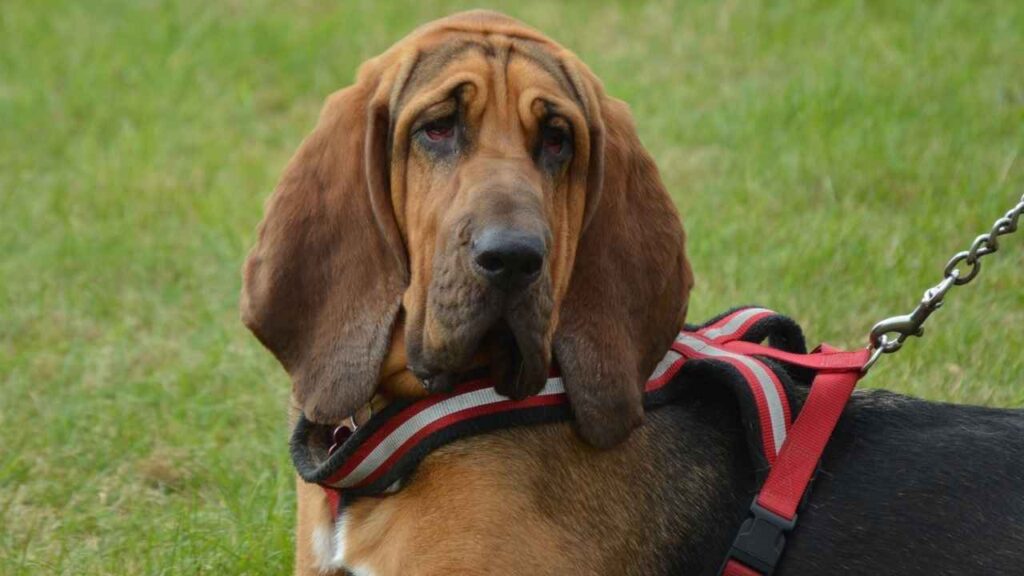
Why They’re Challenging to Train
Bloodhounds have a long history of tracking game for medieval nobles and now excel in search and rescue. Their exceptional scenting ability, while impressive, makes them highly distracted at home, as they will follow their powerful nose over commands.
These dogs are independent thinkers and escape artists, often digging or jumping fences to pursue a scent, which can frustrate owners looking for easy obedience.
As per PetMD, their loud baying, rooted in pack communication instincts, is another behavior that is nearly impossible to train out, making them less suited for owners seeking a low-maintenance, obedient companion.
Training Tips and Considerations
Bloodhounds require patience, persistence, and consistent positive reinforcement to respond.
Regular exercise, mental stimulation, and supervised outdoor time help manage their scent-driven curiosity.
Even with proper training, their independence, tracking instincts, and tendency to wander make Bloodhounds one of the harder breeds to train, so they’re not ideal for first-time or casual dog owners.
3. Chow Chow
Why They’re Challenging to Train
Chow Chows were originally bred as guard dogs and hunting dogs in China, giving them a strong independent streak. This stubborn, strong-willed nature makes them resistant to commands, frustrating owners seeking an easy-training dog.
They are loyal to their families but wary of strangers and less patient with small and even older children, so consistent effort is needed to socialize them properly.
Their tendency to “do their own thing” and strong guarding instincts make recall, leash training, and obedience exercises particularly challenging, as per Petplan.
Training Tips and Considerations
Chow Chows need early, consistent, and positive reward-based training to manage their independence. Harsh or forceful methods will only increase resistance.
Teaching basic commands like “sit,” “stay,” “come,” and “down” using positive reinforcement helps build a strong foundation. Keep sessions short, practice in different locations, and begin early to establish lasting habits.
Ongoing socialization and gentle guidance help Chow Chows learn proper behavior. Patience and consistency are key, and even small successes feel rewarding when training such a difficult dog.
4. Lhasa Apso
Why They’re Challenging to Train
Lhasa Apsos are loyal but strong-willed and independent, which can make obedience training difficult. Their cautious nature and wariness of strangers require consistent handling.
They are sensitive dogs that do not respond well to harsh methods, and their playful yet stubborn behavior can frustrate novice owners during training sessions.

As per Purina, housetraining is particularly challenging, often requiring crate training and a structured routine to prevent accidents. These characteristics mean that training a Lhasa Apso requires patience, consistency, and experience.
Training Tips and Considerations
Short, consistent training sessions using positive reinforcement work best with Lhasa Apsos. Patience and consistency are essential to guide their independent nature. Regular exercise, including several short walks daily, helps manage their energy and maintain focus during training.
While they can become obedient with effort, Lhasa Apsos’ stubbornness and sensitivity make them more challenging to train than many other small breeds, so they are better suited for experienced owners.
5. Bulldog
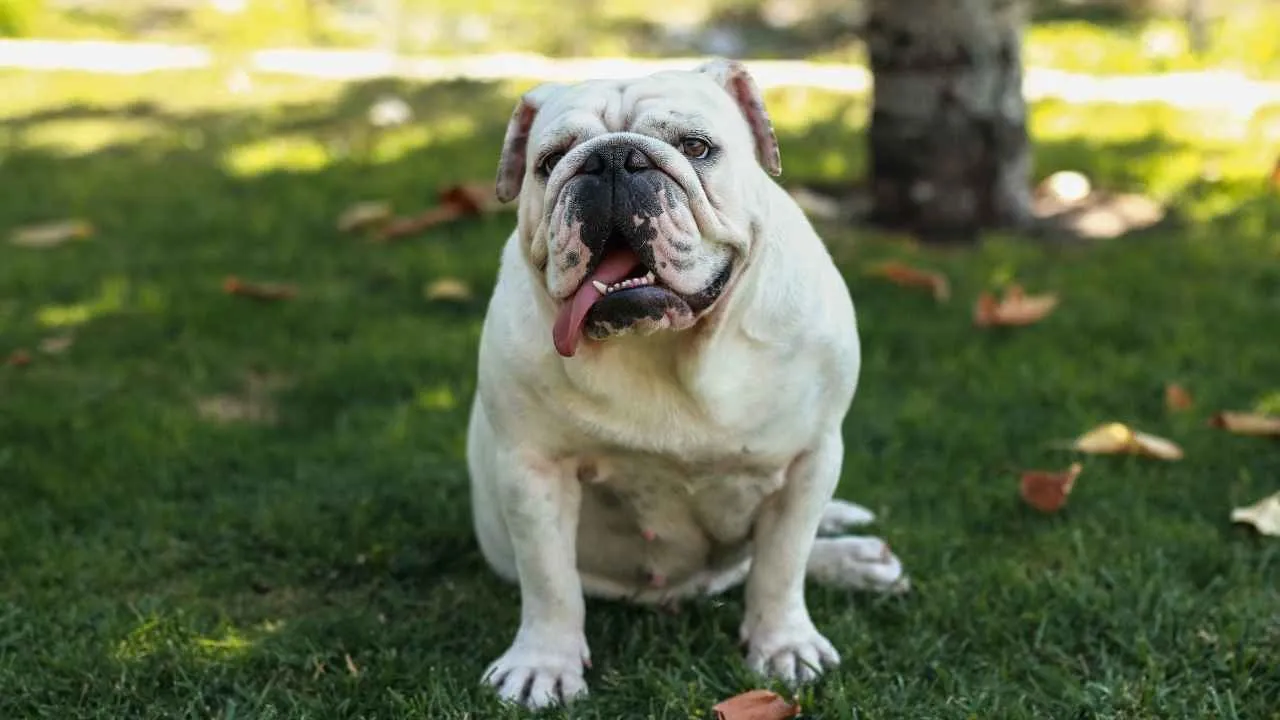
Why They’re Challenging to Train
Bulldogs are affectionate and loyal family pets, but their stubbornness and low energy can make training a struggle. They often decide not to move or follow commands if they’re not motivated.
They are independent thinkers and may ignore instructions, making house training and obedience exercises tricky for first-time pet parents..
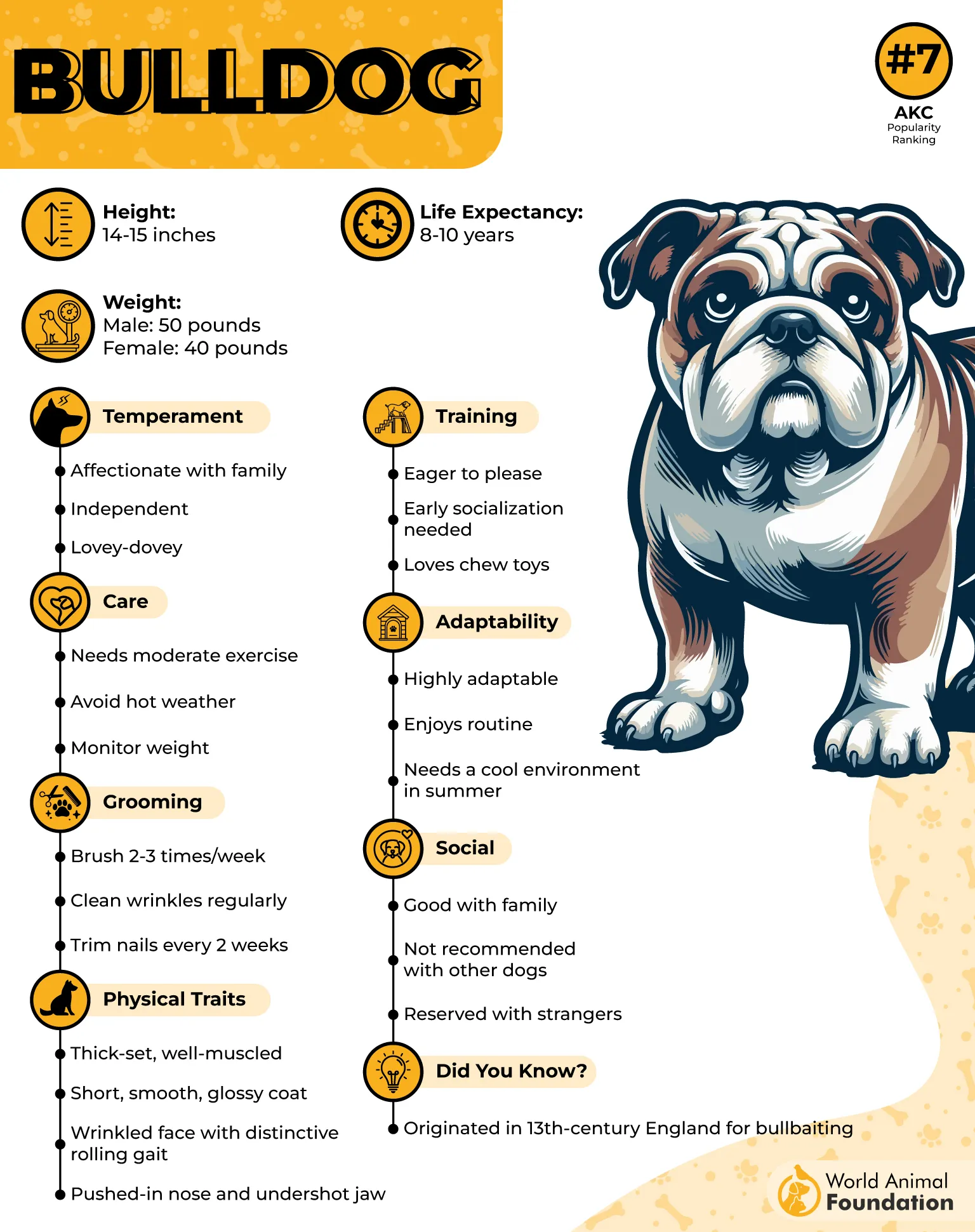
Their calm and docile nature can be deceptive, as their occasional obstinacy requires patience and consistent routines, as per Omlet.
Training Tips and Considerations
Crate training helps Bulldogs feel secure, protects them from household hazards, and supports house training.
Establishing a regular bathroom schedule and using positive reinforcement are essential for progress.
With patience and consistency, Bulldogs can learn routines and commands—but it takes dedication, and every small success is a rewarding achievement for both dog and pet parent.
6. Bullmastiff

Why They’re Challenging to Train
Bullmastiffs are loyal, loving, and highly intelligent dogs, but their size and strength make training more demanding. Without early guidance, their energy and sheer size can lead to accidents or unintentionally knocking over small kids or small animals.
They are independent thinkers and may test boundaries, which can frustrate first-time pet parents expecting quick obedience. Though docile with family, they can be cautious around strangers, requiring consistent socialization to prevent fear-based behaviors from developing.
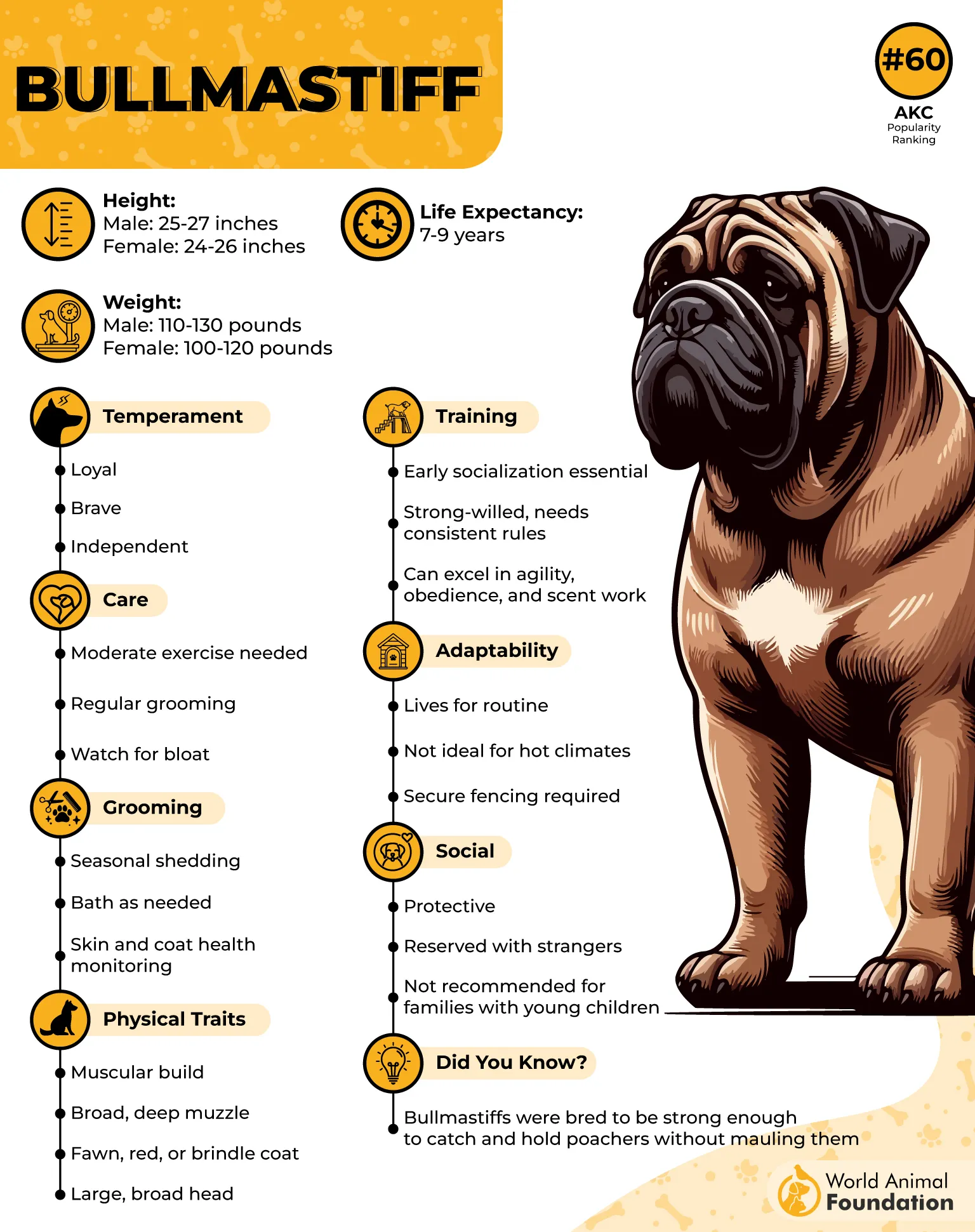
Training Tips and Considerations
Early socialization and consistent positive reinforcement are essential for teaching Bullmastiffs basic commands like sit, stay, and leash walking. Daily exercise in a secure yard helps manage energy, though they are not built for long-distance running.
With patience and structured routines, Bullmastiffs become well-mannered companions—but their size and natural independence mean training takes effort, attention, and respect for their strength.
7. Dachshund

Why They’re Challenging to Train
Dachshunds, or “sausage dogs,” are playful and affectionate but can be stubborn and independent. Their short attention spans and strong-willed nature make consistent training a challenge.
They may test boundaries and develop unwanted behaviors if allowed to get away with mischief, even though their small size makes it easy to overlook.
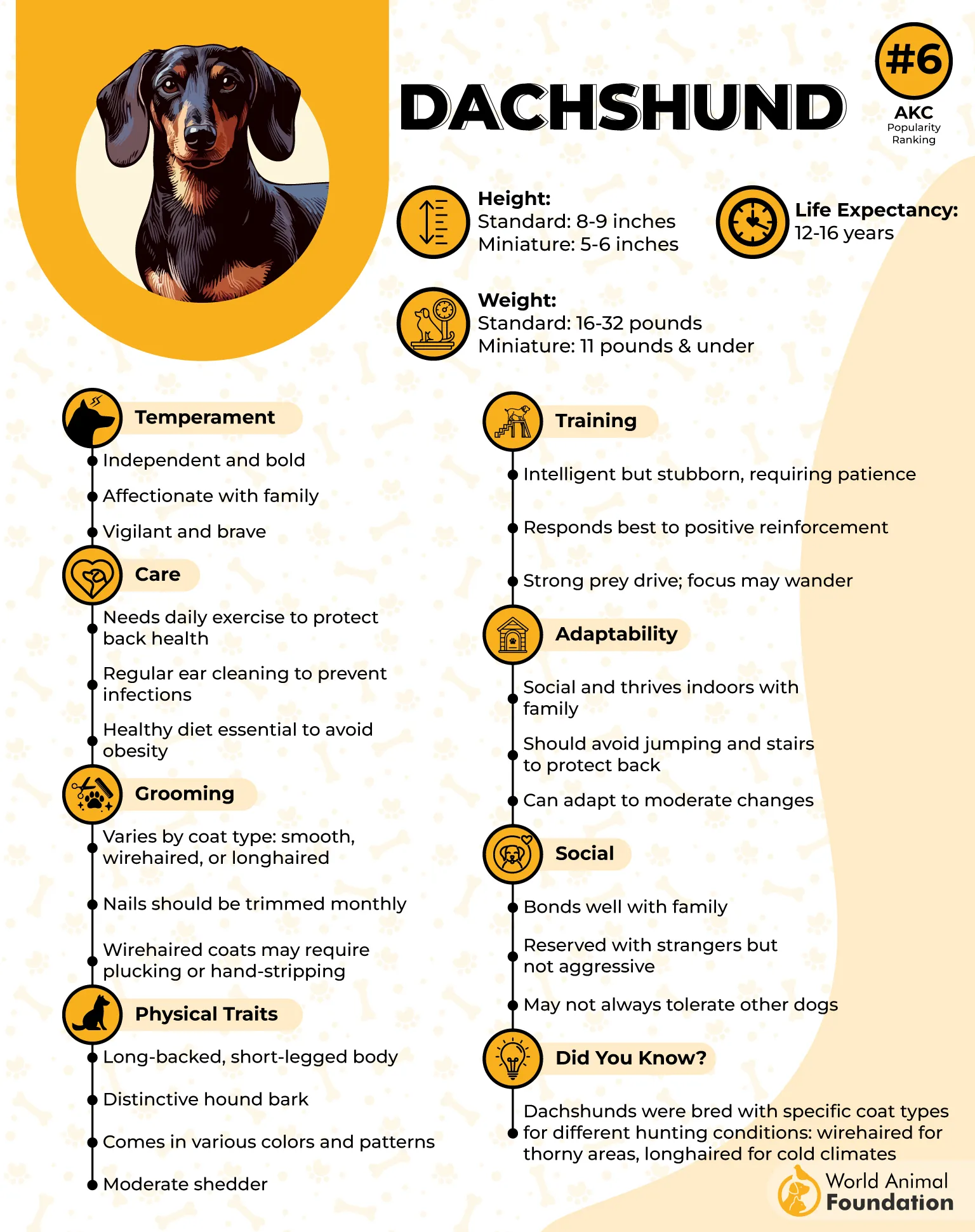
Training from a young age is crucial, as poorly guided puppies can grow into difficult dogs, demonstrating behaviors that require patience and persistence.
Training Tips and Considerations
Short, focused training sessions work best for Dachshunds, emphasizing basic commands like sit, stay, and recall. Crate training and structured potty training help set firm boundaries and prevent bad habits from forming.
Positive reinforcement and consistent guidance are essential. Dachshunds can adapt to training with time, but their playful independence means firm owners need to be patient and consistent.
Conclusion
Choosing the right dog for your lifestyle is about more than looks or popularity—it’s about matching energy, temperament, and trainability.
Breeds like Beagles, Bloodhounds, Chow Chows, Lhasa Apsos, Bulldogs, Bullmastiffs, and Dachshunds all have unique traits that can make training more challenging.
Their independence, stubborn streaks, or strong instincts mean they need patience, consistent guidance, and early socialization to thrive.
For first-time owners or anyone seeking a low-maintenance companion, understanding these challenges upfront can prevent frustration and build a stronger bond with your pet.
With time, effort, and the right approach, even these more stubborn breeds can become loyal, well-behaved family members—just be prepared to invest in training and consistency.


